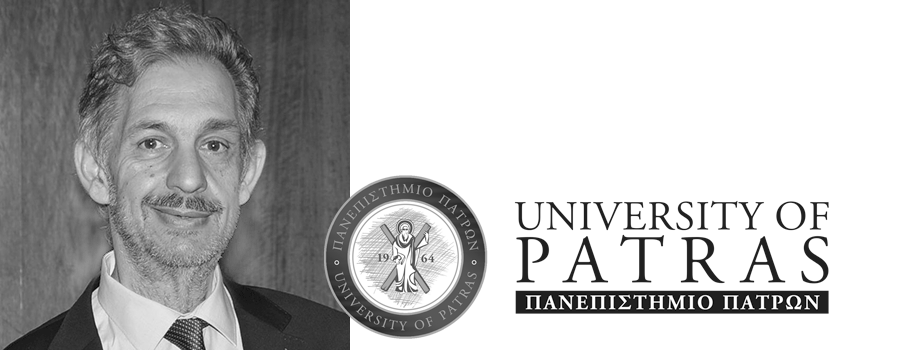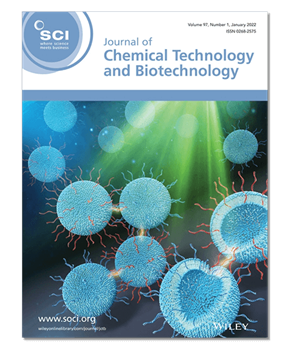Microalga- and yeast-based astaxanthin production via nutrient recovery from wastewater for aquaculture practice: an emerging technology for sustainable development
Qian Lu, Yujie Lu
To read and cite the full paper, please visit:
doi.org/10.1002/jctb.7164
First published: 16 June 2022
WHAT'S IT ABOUT?
Astaxanthin is a marine-based antioxidant that can increase the disease resistance of aquatic animals. As such, it has promise as a fish-rearing supplement, to combat the environmental and ecological problems caused by overuse of antibiotics in aquaculture. Natural astaxanthin can be cultivated from microorganisms including microalgae and yeast.
In this paper, Qian Lu and Yujie Lu from Jiangsu University of Science and Technology, Zhenjiang, China, lay out the development trends of astaxanthin production for aquaculture. The microbial strains that have proven to be good sources of natural astaxanthin are summarised, and accumulation processes and growth conditions are discussed. In addition, wastewater-based cultivation of microorganisms for astaxanthin production is highlighted; the use of wastes as substrates has the potential to lower production costs and increase environmental benefits via nutrient recovery.
Finally, safety risks and potential ecological disasters, such as the accumulation of metal ions in biomass, are reviewed. With mitigation of these risks, the use of astaxanthin for eco-friendly aquaculture shows promise.
From the editor of Journal of Chemical Technology and Biotechnology

Professor Dionissios Mantzavinos
Vice-Rector Academic & Int’l Affairs
University of Patras
Journal of Chemical Technology and Biotechnology (JCTB) is an interdisciplinary journal concerned with the application of scientific discoveries and advancements in chemical and biological technology that aim towards economically and environmentally sustainable industrial processes.
JCTB, originally published as the Journal of the Society of Chemical Industry back in 1882, attracts authors and readers from the whole spectrum of applied chemical and biochemical sciences and, in this respect, the review article of Lu and Lu just epitomises this approach.
Waste valorisation alongside process optimisation to produce high-value products – microbial astaxanthin, in this case – is a win-win scenario, which can simultaneously address environmental problems (i.e. wastewater treatment) and produce natural astaxanthin, typically employed in aquaculture, at an affordable cost.
Research questions that have been addressed include the type of astaxanthin-rich microbial strains, accumulation processes, specific growth conditions and cultivation models.
Recalling George Bernard Shaw’s quote that ‘science never solves a problem without creating ten more’, the proposed methodology may suffer certain drawbacks, such as safety risks of microbial biomass, due to heavy metals bioaccumulation, and ecological disasters, due to coupling waste treatment with microorganisms cultivation. Such potential obstacles need serious attention from the research community.
ABSTRACT
Microbial astaxanthin, which is a high value antioxidative pigment, has been widely used in aquaculture for pigmentation, immunity enhancement and disease resistance. This novel model is regarded as an emerging way to alleviate environmental pollution and ecological problems. Therefore, cultivation of astaxanthin-rich microorganisms for aquaculture merits attention of researchers and technicians. This paper presents research progresses in microbial strain screening, astaxanthin formation pathways and inducing conditions. Particularly, two-stage cultivation, which could effectively improve astaxanthin productivity in microorganisms, is summarised. In addition, the integration of microorganism cultivation with wastewater remediation to simultaneously lower the production cost of astaxanthin and create environmental benefits is discussed. Last but not least, an in-depth discussion of the effect of extracted astaxanthin or astaxanthin-rich biomass on fish/shrimp rearing is provided. Based on a literature review and the present authors’ experience in industry, this paper lists some problems, such as safety risks of microbial biomass and potential ecological disasters. Besides, potential solutions and prospects are discussed to promote the further development of astaxanthin-related industry.
MEET THE RESEARCHERS

Yujie Lu & Qian Lu
School of Grain Science and Technology, Jiangsu University of Science and Technology, Zhenjiang, China
To what extent is microbial astaxanthin production already being utilised in industry?
In the industry, microbial astaxanthin has not been widely used, although previous academic studies devoted a lot of effort to the research of microbial astaxanthin production and utilisation. To our knowledge, at present, microbial astaxanthin is often added to food as an additive or nutritional supplement.
Compared to artificial astaxanthin, microbial astaxanthin is regarded as a much safer astaxanthin source. However, in the aquaculture industry, microbial astaxanthin has not been widely used, although astaxanthin is considered as an important ingredient of fish feed.
One of the main reasons is that the production cost of microbial astaxanthin is high. Besides, the cultivation of microorganisms has a high requirement on the operational conditions and technicians. In most underdeveloped regions, it is too hard to conduct large-scale production of microorganisms for astaxanthin production. Therefore, microbial astaxanthin attracts attention from industry, but high production costs and complicated production procedures limit its wide application.
What are the key advantages of exploiting microorganisms to produce astaxanthin, for use in aquaculture practices?
The employment of microorganisms to produce astaxanthin for aquaculture practice has three major advantages. Firstly, microbial astaxanthin is a component with super anti-oxidative properties, which can enhance the immune response of aquatic animals and prevent the abuse of antibiotics. Thus, the employment of microbial astaxanthin as a feed ingredient may promote the upgrading of aquaculture and the development of eco-friendly aquaculture.
Secondly, in practice, microorganism cultivation is always integrated with the treatment of aquaculture effluent. In such a model, nutrients in aquaculture effluent can be assimilated by microorganisms for the biosynthesis of high-value components, including astaxanthin. Accordingly, microorganism-based astaxanthin production can also be a process of solving the pollution problems caused by aquaculture activity.
Thirdly, edible microorganisms can be directly added in fish diets and there is no need to extract astaxanthin from microorganisms for the use in aquaculture. Without the extraction process, the total cost of astaxanthin can be reduced to a lower level. Besides, in addition to astaxanthin, microorganisms contain other high-value components, which can be beneficial to the growth of aquatic animals.
What are the main differences between microalga-, yeast-, and bacterial-based astaxanthin production, and why has bacterial-based production been less widely studied?
In our opinions, the major differences between microalga-, yeast-, and bacteria-based astaxanthin production include the difference in production conditions and the difference in astaxanthin content and biomass productivity.
Firstly, the production conditions of microalgae, yeasts, and bacteria are different. Microalgae have an autotrophic growth model while yeasts and bacteria mainly have heterotrophic growth models. Accordingly, different production conditions are required to produce microalga-, yeast-, and bacteria-based astaxanthin.
Secondly, due to the different metabolisms, microalgae, yeasts, and bacteria have very different astaxanthin content and biomass productivity.
Up to now, bacteria-based astaxanthin production has been less widely studied. In our view, this is attributed to three disadvantages of bacteria-based astaxanthin:
Firstly, astaxanthin is rarely discovered in bacteria although there are numerous bacterial species on earth.
Secondly, a large number of bacteria are not permitted to be added in food or animal feed. Thus, bacteria-based astaxanthin production may not be accepted by the food or feed industry.
And finally, bacteria are suspended in culture media and their small size makes the biomass harvesting process complicated.
What would you say is currently the biggest challenge in microbial production of astaxanthin for use in aquaculture, and where does future research need to focus to overcome this?
The biggest challenge, in our opinions, in microbial production of astaxanthin for use in aquaculture is the high cost of microorganism production. Microorganism cultivation has high requirements on temperature, nutrition, mixing, and illumination, making the production costs very high. Long cultivation periods (7-20 days) of some microorganisms, particularly microalgae, also increase the production cost of microbial astaxanthin. Hence, in the industry, to promote the wide use of microbial astaxanthin, production cost must be further lowered.
In the future, to overcome this problem, research should focus on the immobilisation of microorganisms and wastewater-based microorganism cultivation. Firstly, immobilisation of microorganisms could effectively reduce the harvesting cost which can contribute to 30% of the total production cost. For example, microalgae cultivated on biofilm could be harvested by using scrappers, instead of centrifugation. Thus, the energy input of biomass harvesting can be dramatically reduced.
Secondly, microorganism cultivation can be integrated with wastewater to reduce the cost of culture media. Compared to artificial media, wastewater can be obtained at a much lower cost. It should be noted that in this case, only the wastewater without toxic components can be used for microorganisms-based astaxanthin. Otherwise, microbial astaxanthin might be contaminated by the toxic components in wastewater.

